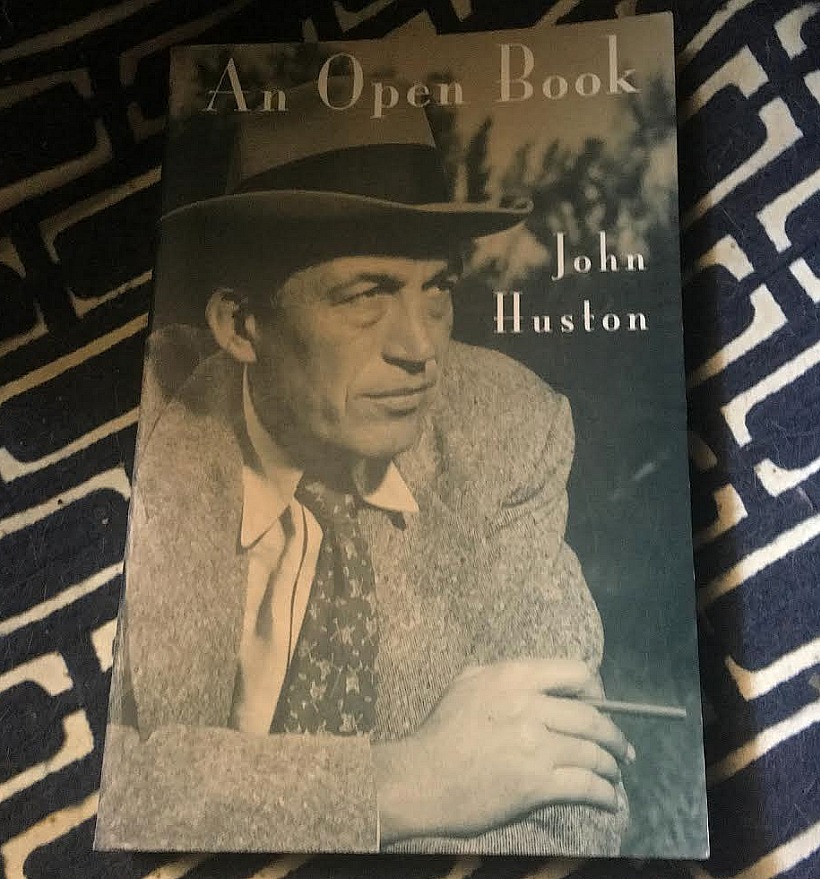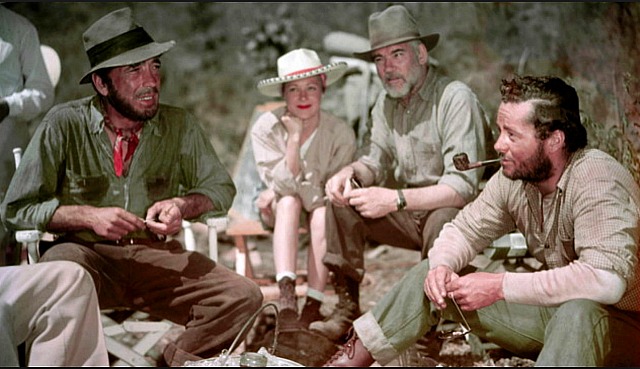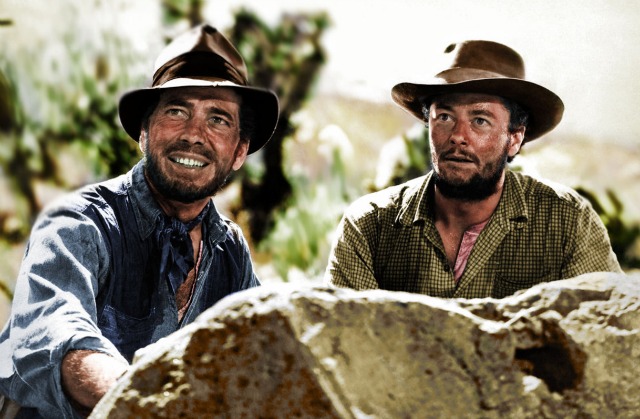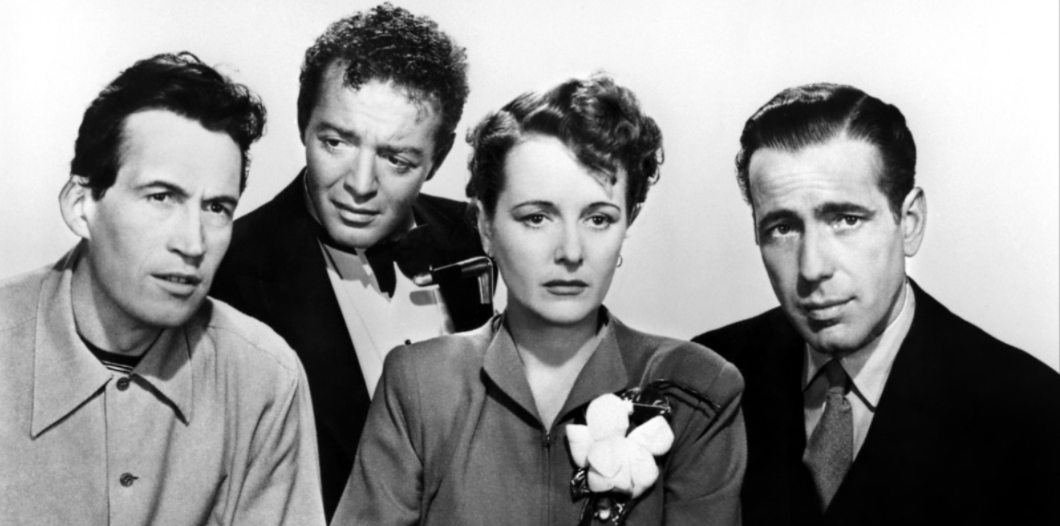All my life I’ve regarded John Huston (1906-1987) as quite the fellow, and now at long last I’m reading his autobiography, which was first published in 1980. A 1994 trade paperback version was just delivered by Amazon.
Huston was first and foremost a lion, and not incidentally a director of above-average and sometimes brilliant films for over 45 years in a row.
The ones he made during his first decade are unassailable — The Maltese Falcon, Across The Pacific, Let There Be Light, The Treasure of the Sierra Madre, Key Largo, The Asphalt Jungle, The Red Badge of Courage and The African Queen. Huston’s early to mid ’50s output was pretty formidable also — Moulin Rouge, Beat The Devil, Moby Dick and Heaven Knows, Mr. Allison.
For the next 30 years Huston’s films were in and out, but at least they included The Unforgiven, The Misfits, The Kremlin Letter, Fat City, The MacKintosh Man, The Man Who Would Be King, Under The Volcano, Prizzi’s Honor and The Dead.
From David Thomson‘s “New Biograhical Dictionary of Film”: “Huston was…the movie director who told manly, energetic stories, and [who] liked to end them on a wry chuckle. He was himself a writer, a painter, a boxer, a horseman, a wanderer, a gambler, an adventurer and a womanizer.
“More than most he relished the game of getting a movie set up and the gamble of out-daring and intimidating the studios. His best pictures reflect those tastes and that attitude and had an expansive, airy readiness for ironic endings, fatal bad luck, and the laughter that knows men are born to fail.”

John Huston, Humphrey Bogart, Walter Huston, Tim Holt and Alfonso Bedoya, among many others, didn’t shoot The Treasure of the Sierra Madre (’48) from inside a silvery black-and-white membrane, but within a normal, full-color reality realm like anything else. I feel safe in saying that the first two shots were probably captured in real photographic color; the last one is colorized.




